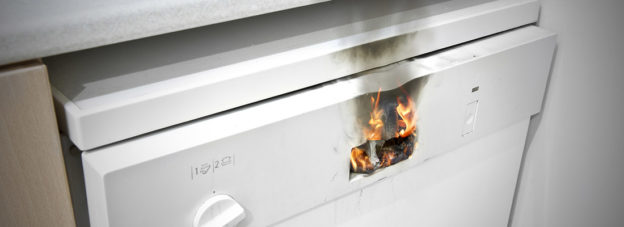To establish a product liability claim in Arkansas, the plaintiff must prove that the product was supplied in a defective condition, which rendered it unreasonably dangerous and that the defective condition was the proximate cause of the claimed damage or injury. Ordinarily, a plaintiff relies upon direct evidence of a product defect to establish its product liability claim. However, in some cases, the product sustains so much damage that it is impossible for a plaintiff to obtain direct evidence of a defect.
The malfunction theory allows a plaintiff in a product liability action to establish a defect through circumstantial evidence, when direct evidence of a defect no longer exists. In order to utilize the malfunction theory, a plaintiff must present evidence that an unspecified product defect was the most likely cause of the damage/accident and rule out all other possible causes of the damage/accident. In Am. Nat’l Prop. & Cas. Co. v. Broan-Nutone, No. 5:18-CV-5250, 2020 U.S. Dist. LEXIS 117116, the United States District Court for the Western District of Arkansas ruled that the plaintiff offered sufficient evidence under “the malfunction theory” to defeat a summary judgment motion in a product liability action involving a bathroom fan that was destroyed in a fire.
In Am. Nat’l Prop. & Cas. Co., a subrogating carrier filed a product liability lawsuit alleging that a defective bathroom fan caught fire and caused property damage. The carrier filed suit against the manufacturer of the fan and the manufacturer of a motor in the fan. The defendants moved for summary judgment based upon two arguments: (i) the plaintiff could not identify a specific defect in the fan that caused the fire; and (ii) there was a lack of evidence to establish that a defect existed at the time the fan left the defendants’ control.
The plaintiff’s experts testified that the bathroom fan was the sole explanation for the fire and they ruled out all other potential ignition sources, but they admittedly could not identify the specific defect within the fan that caused the fire. The plaintiff’s experts concluded that the bathroom fan was the sole ignition source for the fire based upon the following: (i) the fire patterns confirmed that the fire originated at the fan; (ii) the remains of the fan were found on the floor under fire debris; (iii) the fan was energized at the time of the fire; and (iv) all other sources of ignition were ruled out.
During the investigation of the origin and cause of the fire, the plaintiff’s experts examined the following hypotheses regarding the origin/cause of the fire: a disgruntled person may have set the fire; the insured may have caused the fire with smoking materials; faulty wiring may have sparked the fire in the walls; sound equipment or a power strip on a platform above the bathroom may have caused the fire; or the bathroom fan may have malfunctioned. The plaintiff’s experts were able to rule out these hypotheses regarding causation, as follows. The plaintiff’s experts ruled out the theory that the fire was intentional because there was no evidence that the fire was set and a search dog found no traces of accelerants. They ruled out careless smoking as a cause of the fire because the insured testified that smoking only occurred outside the building and no smoking materials were found inside the building. In addition, they ruled out the sound equipment and power strip on the platform above the bathroom as a cause of the fire based upon fire patterns, which confirmed that the fire started in the bathroom ceiling and spread upwards to the platform. Finally, the plaintiff’s electrical engineer was able to rule out the structural wiring as a cause of the fire because it contained no electrical activity (i.e., no arcing or beading that would indicate a source of ignition). Even though the plaintiff could not identify a specific defect in the fan that caused the fire, the court held that there was sufficient circumstantial evidence for a jury to find that a defect in the fan was the proximate cause of the fire.
The court also held that a jury could reasonably conclude that a defect in the fan existed when it left the defendants’ control based upon the following: (i) the fan was installed in the ceiling of the bathroom during original construction of the building; and (ii) there was no evidence that the fan had been altered since installation.
This case is a reminder of the need for a thorough investigation in product liability actions. The malfunction theory is a powerful tool for subrogating carriers to make recoveries in product liability actions. However, all probable hypotheses regarding the cause of the fire must be properly identified and investigated. If one possible ignition source is not identified or investigated by the subrogating carrier, the carrier cannot sustain an action pursued under the malfunction theory.

